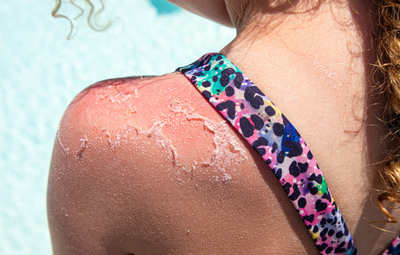The Best Treatments for Sun Damaged Skin

Summer is officially over (sniff, sniff), and while you might have tapped off your bottle of SPF, chances are that you still unwittingly exposed some skin to the UV rays. Here, we take a look at the best ways to treat sun damage and kill off any pre-cancerous skin cancer cells.
Topical Treatment: Fluorouracil (Efudex, Carac)
What it does: These topical products are great. They block the DNA of the growing sun damaged cells and essentially destroy them. They do a great job treating sun damage thatâs invisible to the naked eye.
What to expect: The medication works only on sun-damaged or pre-cancerous cells. If you donât have much sun damage, the redness wonât be too bad. Often I use these medications on patients with severe sun damage and their reactions can be very dramatic and even painful. But the end result is a significant improvement in precancerous lesions. As a nice side benefit, these medications actually cosmetically improve the quality of facial skin!
Light weight in-office procedure: Liquid Nitrogen freezing of sun-damaged cells
What it does: The liquid nitrogen simply kills the pre-cancer cells that your dermatologist diagnoses in the office. In this way, the bad cells die off and are replaced by healthier epidermal skin cells.
What to expect: The liquid nitrogen kills the cells of the epidermis that are damaged by the sun. This cell death causes a blister which can hurt for a few days as the abnormal cells give way to healthy skin cells during the healing process. If you have a lot of pre-cancers, treating them all can cause a lot of blistering, but I normally find that patients do pretty well with this easy, one-off treatment.
Medium weight in-office treatment: Photodynamic therapy or âBlue Lightâ therapy
What it does: We apply a medication to the entire face and let it soak in for around an hour. The pre-cancerous cells âsuck upâ the medicine and the normal cells do not. Then we shine LED lights at the face which activates the medicine, killing the damaged cells that absorbed the photosensitizer medication. Similarly to the creams mentioned above, this seeks out not only visibly damaged cells, but also microscopically small pre-cancers that havenât even shown up on the skin yet.
What to expect: Similar to the topical creams, the more sun damage a patient has, the more intense the reaction. These range from very mild redness to intense peeling and tenderness. Very importantly, patients need to strictly avoid the sun since traces of the photosensitizer medication remain on the face for several days. This class of treatments also improves the cosmetic appearance of sun damaged skin.
Heavy duty in-office treatment: Micropeel + Photodynamic therapy
What it does: This treatment is intended to give the greatest improvement both in cosmetic appearance of sun damage and destroy as many abnormal cells as possible. We pre-treat the skin with a laser to peel off the protective surface cells, then apply the medication for photodynamic therapy using blue light. This allows even greater efficacy of the photosensitizer drug and results in a much augmented effect.
What to expect: This âbig gunâ procedure works absolutely beautifully, but you need to plan for some time off to heal, and absolutely avoid the sun for several days. The reactions can be impressive, even if you have only a moderate amount of sun damage. The upside to this trade off is that you will come out with much improved, younger looking, healthier skin!
